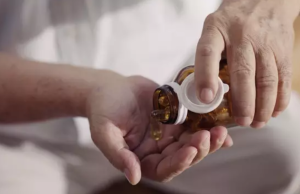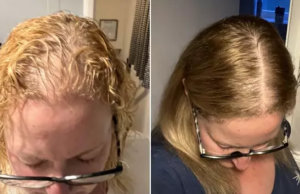
A Trick To Get Rid Of Mold And Peeling Paint On Walls: It’s Easy, Cheap And Every Household Can Do It
Grandmother’s Old Trick Makes Mold Disappear from Your Home
Commercial products might be expensive and ineffective. Instead, try these simple, efficient home remedies.

Borax and Vinegar: A Winning Combo
Combine in a spray bottle:
2 tablespoons of Borax
¼ cup of white vinegar
2 cups of hot water
Apply this mixture to mold-prone areas, let it sit for an hour, then scrub with a sponge. Rinse and dry with a clean cloth.
Baking Soda and Soap: Goodbye Mold
Create a baking soda paste with water and apply it to mold spots. Leave it for an hour, then scrub with a stiff brush. Follow with a soap solution to complete the cleaning. Rinse with vinegar water to eliminate mold and black spots permanently. Wipe with a clean, dry cloth and let the area air dry. Ingredients like ethyl alcohol or ammonia can also be effective against mold.
Safety First: Wear gloves and a mask to protect yourself from harmful spores during this sensitive cleaning process.
How to stop paint peeling

The first thing to do is check for any leaks, gaps, old paint and the quality of ventilation in your house. It’s likely you are going to need to repaint in order to improve the situation but the problem may well reoccur if you don’t get the above issues sorted out first. If you can resolve those then you can move on to preparing your house for a new coat of paint.
Scrape off flakey paint
You’ll need to remove as much of the old, peeling paint with a paint scraper so that the underlying surface is clean when you apply the new paint. If you don’t do this then you are going to have loose paint particles underneath your fresh paint which will affect the quality of the finish and might start flaking off within a short space of time.
Using a paint scraper may be a bit of a time consuming job but it will be worth it in the end as you’ll have removed all the flakey paint and ensure you’re starting fresh with a clean surface. If you can’t get rid of all the underlying paint then get rid of the peeling bits and clean the rest with sugar soap so get the surface as dirt-free as possible.
Choose a good quality paint
Don’t waste time with cheap, poor quality paints. While you may be initially tempted by the low upfront cost, you’ll probably find that the paint finish is unsatisfactory and could start to show its age much quicker than a better quality alternative.
There is dedicated paint available from many recognisable brands that is also resistant to mould and mildew. This type of paint would be a great option as the finish tends to have a slight sheen that allows moisture to freely run off it, rather than clinging and penetrating the paint as moisture might do to a standard matt paint.
To get the best finish, you may need to apply more than one coat. If you do this then make sure that you leave enough time for the paint to dry before applying the new coat. The manufacturer will provide instructions but always be a little conservative when it comes to your bathroom and leave a little extra time than the manufacturer recommends.
Another common reason for peeling paint is not allowing the previous coat to dry properly before putting on the next coat so, when it comes to such an important room like a humid bathroom, take your time and don’t be tempted to rush the job.




















